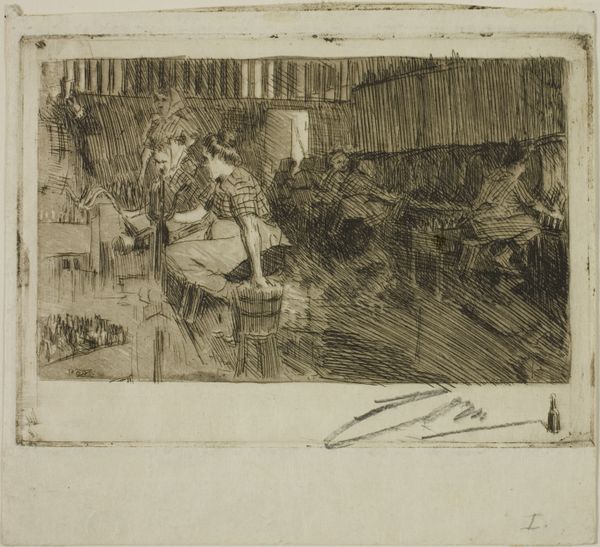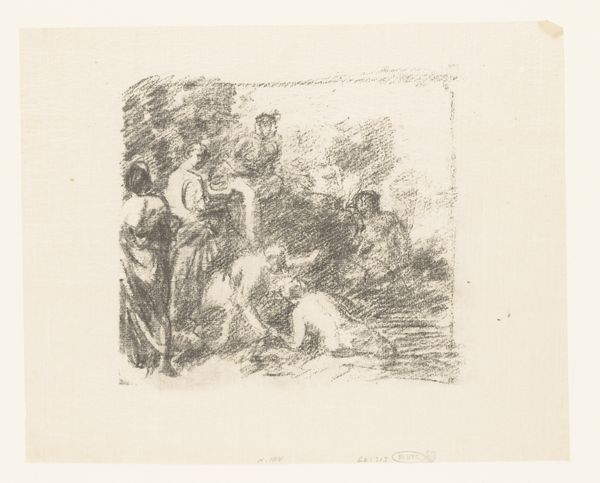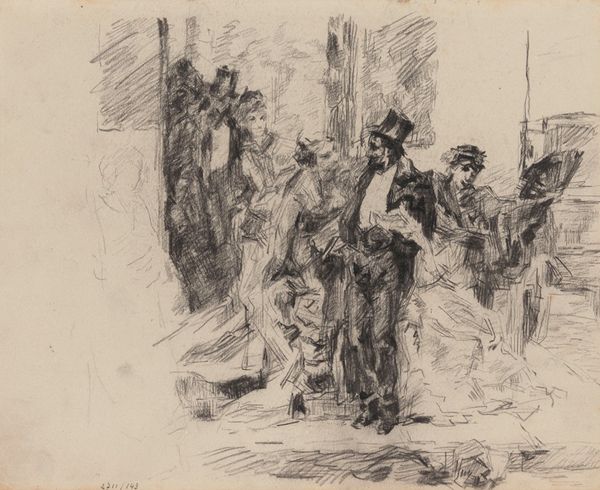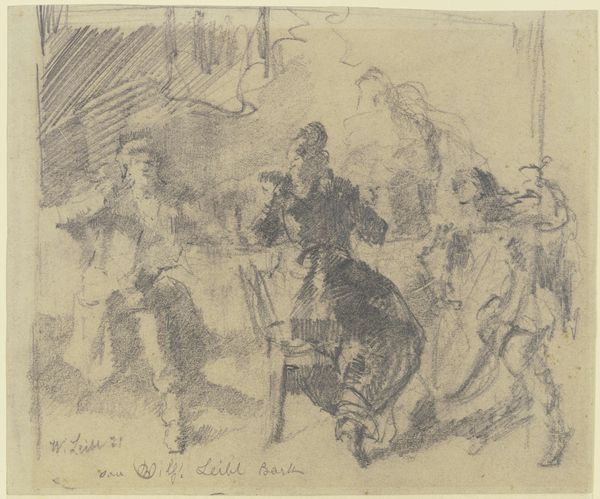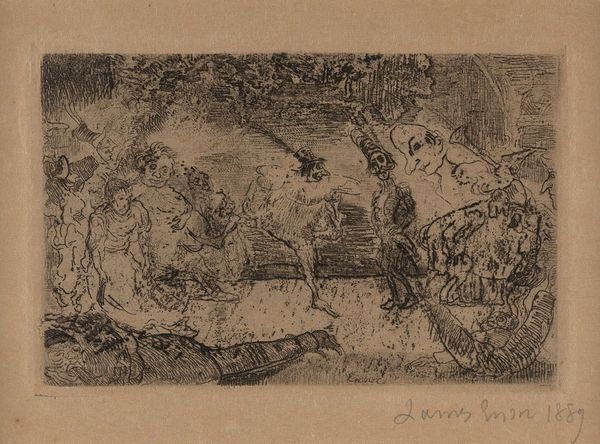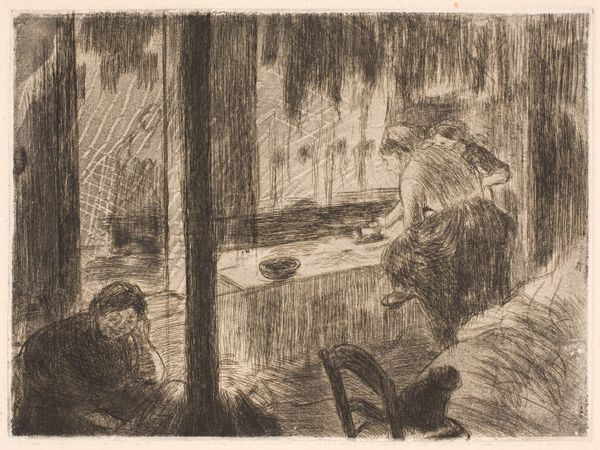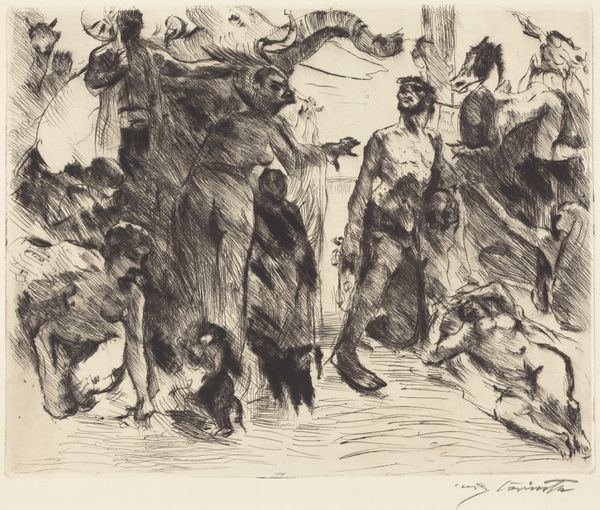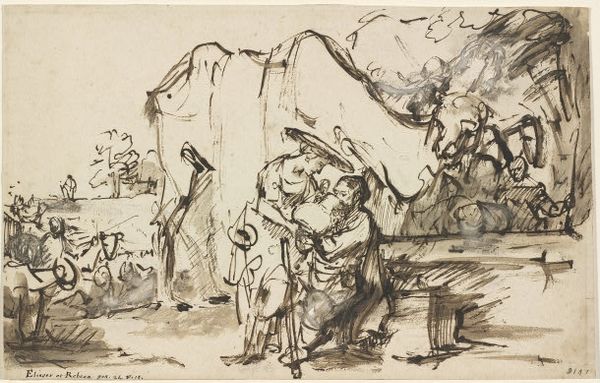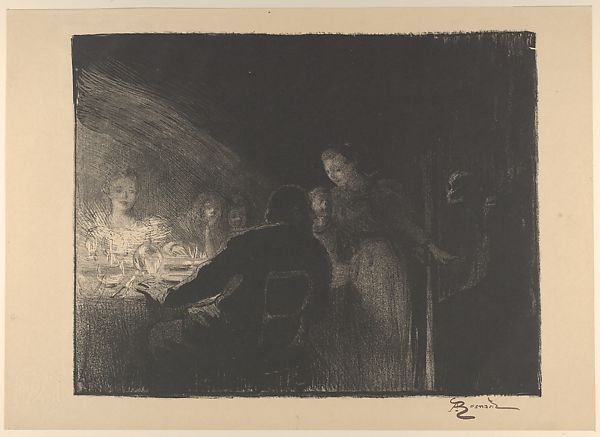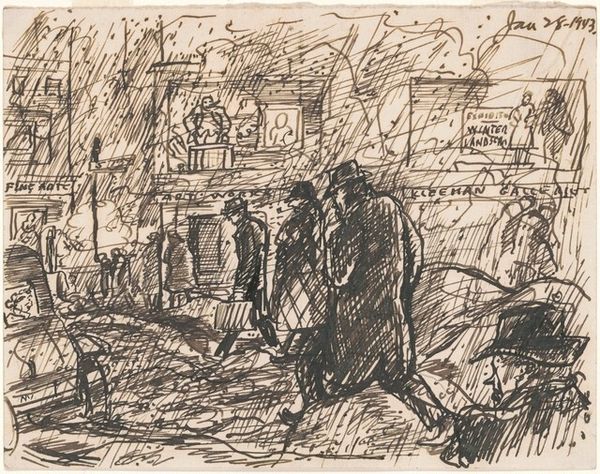
print, etching
# print
#
etching
#
cityscape
#
genre-painting
Copyright: National Gallery of Art: CC0 1.0
Curator: We’re looking at “Glass Blowers, Murano,” a 1925 etching by James McBey. It's a wonderfully atmospheric piece. Editor: My first impression is one of intense heat and frenetic energy, like glimpsing into the mouth of a furnace. The composition is very active. Curator: Yes, the artist captured that bustling workspace so well. The etching technique—all those cross-hatched lines—really conveys the gritty reality of labor. You can almost feel the heat radiating off the glass. Editor: Absolutely, and considering the historical context, the scene reveals the physical demands placed on these workers. Notice how the bright, almost ethereal glow of the glass contrasts with the shadowy figures. It underscores the exploitation often inherent in these traditional crafts. Curator: I see your point, but I’m also drawn to McBey's mastery of the etching process itself. Think of the skill involved in creating this tonal range, these subtle variations with just lines on a copper plate. How it then translates into a multiple for wider consumption is interesting too. Editor: Well, let's also consider the implications of portraying this specific environment at this time. McBey may be admired for his skill, but he’s also presenting a slice of life within a very specific social hierarchy. Were these laborers fairly compensated? Were their working conditions safe? What does it say about class disparity? Curator: These are valid questions. The social and economic aspects of production can't be divorced from the aesthetic considerations. What McBey presents on the surface as simply people at work, there's clearly far more happening when viewed through a wider social context. Editor: Exactly, seeing this as a genre scene invites deeper engagement. I come away with a more thoughtful perspective, acknowledging the human element often obscured behind technical expertise. Curator: For me, this work deepens appreciation of process and what material elements the art engages, and what they might represent. Editor: And I now appreciate how art and its creation are enmeshed with socioeconomic considerations, encouraging dialogues about identity, labor, and justice.
Comments
No comments
Be the first to comment and join the conversation on the ultimate creative platform.
